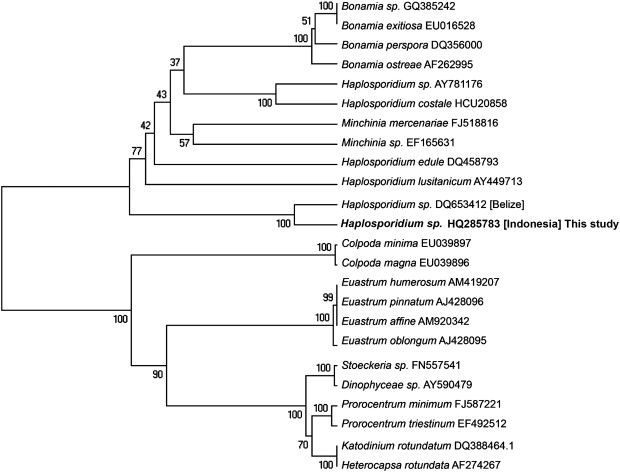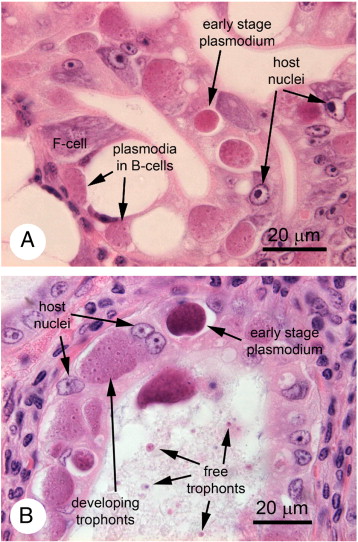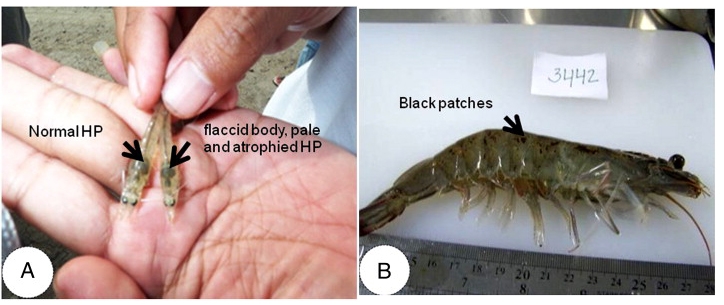Cause
Haplosporidia is a group of protozoa that is obligated to infect certain freshwater and saltwater invertebrates.
One or more haplosporidian species have been reported on penaeid shrimp. However, there has been no investigation to determine the exact classification location in the subspecies Haplosporea.

The size of plasmodia ranges from 12 to 15 yun on the short axis and 12 to 50 km on the long axis similar to previously described reports for haplosporidian parasites on P.vannamei card shrimp in Cuba (Dykova etal. 1988) and Belize (Nunanet al 2007).
SYMPTOM
The overall signs of shrimp infected with haplosporidian disease include: the contraction of the hepatopancreas, the pale body, melanin pigmentation in the epidermis cells that are accompanied by slow-growing shrimp.
Histopathological examination:

Note: Host nuclei: Host nuclei, early stage: early stage of plasmodium, plasmodia in B cells: plasmodia in B-Lymphocytes, free trophonts: free cells of adult plasmodium.

Hepatic tissue histopathological analysis (HP) shows evidence of a haplosporidian parasite expressed by a multicellular and adult plasmodia (Plasmodia) parasite (trophont) in epithelial tubular cells. Plasmodia causes the breakdown of hepatopancreatic epithelial duct cells when they release trophonts into the ducts.
DISTRIBUTION
Cuba, Nicaragua, Mexico, Indonesia and the Philippines.
Hosts: Whiteleg shrimp (Penaeus vannamei), blue shrimp (Penaeus stylirostris), black tiger shrimp (Penaeus monodon).
PREVENTION
In Belize (nunan et al.2007) the outbreak occurred during the last part of the growing cycle during the cold months, but in Indonesia, the outbreak started within the first month after stocking.
One possibility – the differentiation of disease outbreaks in Belize due to the horizontal transmission of pathogens from the environment to uninfected shrimp and the gradual accumulation leading to outbreaks at the end of the culture cycle. While the farm in Indonesia developed disease because PL shrimp carried the disease before stocking. This argument is supported by the results of the parental sample analysis. Test results show that the infected body does not show any particular disease, although there is a tendency to develop dark spots on the body.
Infection rates in broodstock and pond culture from 2004 to 2010 suggest that the haplosporidian disease outbreak was caused by stocking of infected shrimp larvae. And disease outbreak rates were reduced after broodstock screening was performed.
Therefore, the prevention strategy is to screen the broodstock in the hatchery and remove the imported haplosporidian positive broodstock.
Source tepbac.com

 Tiếng Việt
Tiếng Việt Indonesia
Indonesia